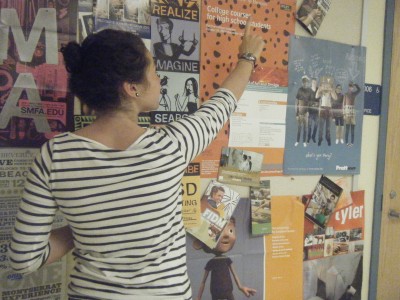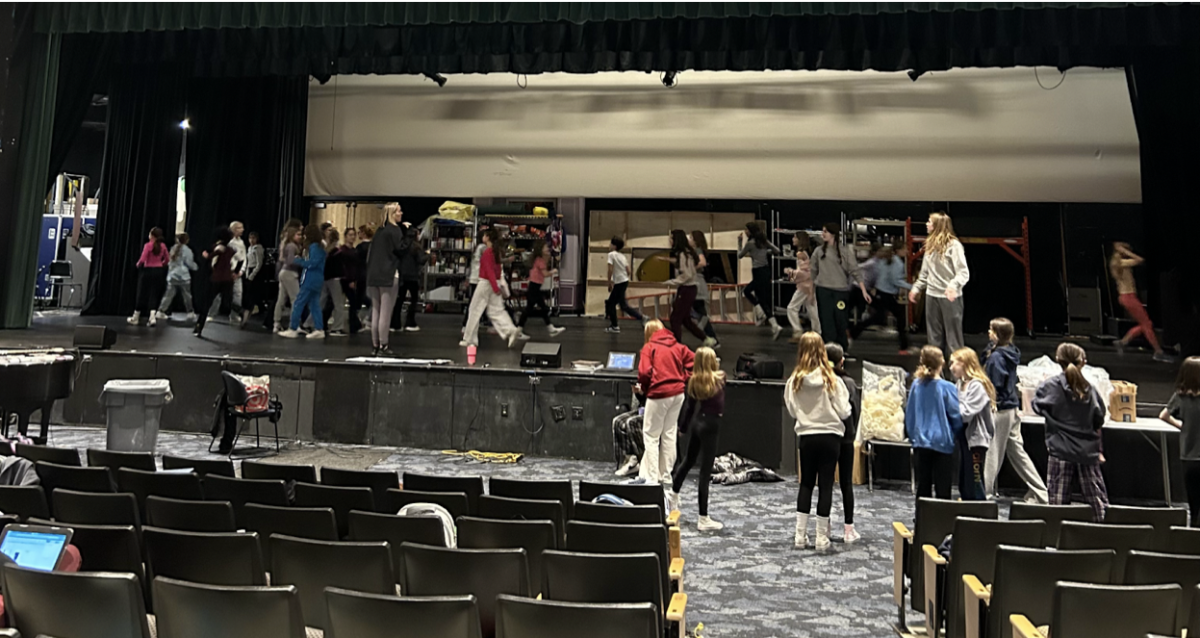Rachel Guetta ’13
Opinions Editor

While many juniors and seniors are busy visiting colleges, trying to perfect SAT scores and writing essays, some students have the added burden of assembling art portfolios.
Artists are able to demonstrate their talent to schools by including a portfolio, a compilation of samples of their artistry, along with their application.
Whether students are applying to an art school or a liberal arts school with a prominent art program, putting together a portfolio is a complex process.
According to Camille Eskell, a drawing and studio art teacher, a successful portfolio must include a wide range of styles to show their versatility.
“For most art school portfolios, a very solid base in observational drawing is key.
Drawing is the fundamental visual language and the basis of visual thinking, so schools want to see the student is proficient in technical as well as critical thinking skills,” Eskell said.
“The students should also include examples of more creative work and their work in different disciplines like painting, sculpture, graphic design, photography or whatever their focus and exploration is, to give a full picture of who they are as student artists.”
According to artist Gabe Schindler ’11, a standard art portfolio has 15 to 20 pieces, which
makes selecting the pieces difficult, as each decision is crucial.
“Each artist is competing against thousands of others, with three to four years of their proudest works on scrutiny by complete strangers.”
“Art is an extremely personal form, and it is hard to judge someone based on his or her thoughts and imagination,” Schindler said.
When putting together an art portfolio is added to the list of all the application requirements, it is perhaps more time consuming than applying to a non-art school.
“Every single night, not only do I complete my homework and study for tests, but I also work on my pieces for about three hours. In addition, I am always in the drawing room during my free and even lunch,” Schindler said.
Because of the difficulty of putting together a portfolio, many students seek help from their art teachers or professionals.
Student artist Daniela Ehrenwald ’11 has attended portfolio review classes at Silvermine Guild Arts Center in New Canaan, where professional judges help students decide which pieces they should or should not use.
“There are several private teachers in our area that have studios and work with students individually or in group sessions after school—the time, effort and creativity these venues provide greatly aid in honing student skills and adding work to the portfolio,” Eskell said.
The selection process can be stressful due to the seemingly arbitrary evaluations made by admissions officers—personal expression and imagination are being judged, not only numbers and letter grades.
However, the process of applying does not differ greatly from that of a non-art school, as both require personal statements and test scores.
“I would not say that it is a more stressful experience than any other senior’s. Each student has their own agenda and copes with the college process in their own unique manner,” Schindler said.
Working hard seems to be the key to success in compiling portfolios.
“There is now a tremendous amount of international competition to get into some of the best art schools—working your hardest on something you love anyway is the greatest way to improve and expand,” Eskell said.












































